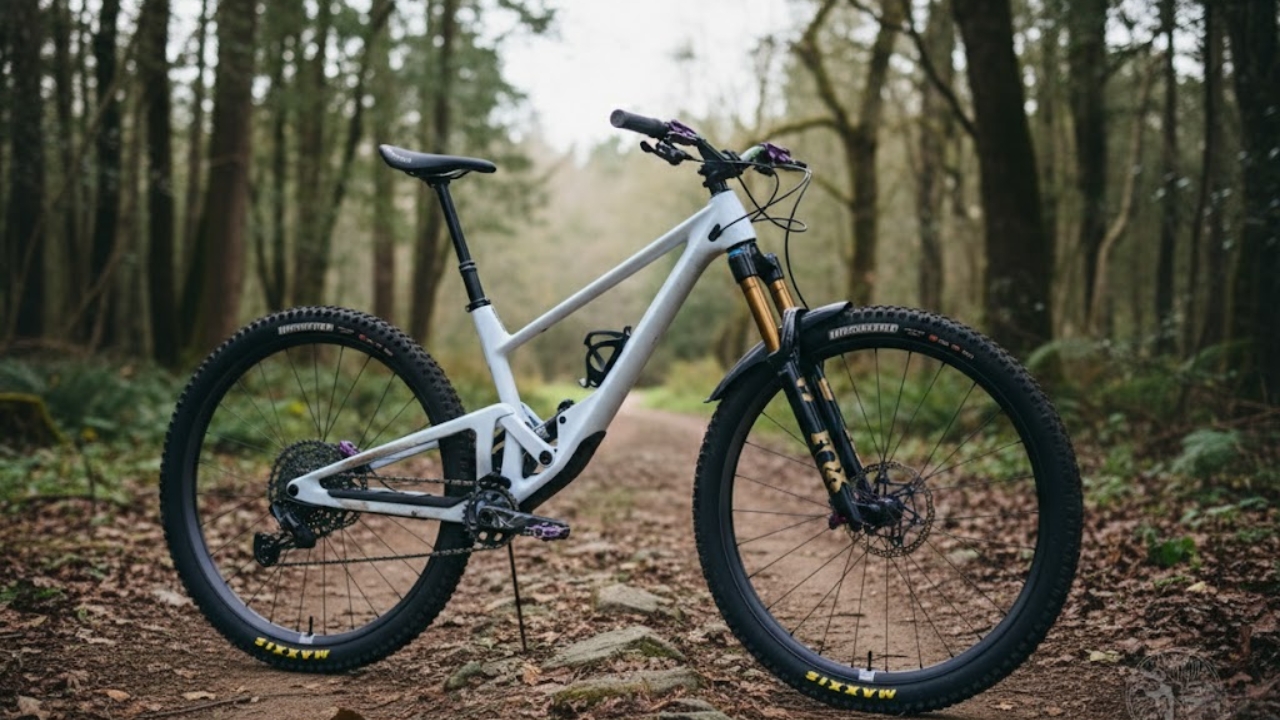The Maxxis Dissector has long been one of the most trusted tires in the mountain biking world, known for its combination of speed, control, and confidence on technical terrain. The latest version of the Dissector pushes this legacy even further with refined tread patterns, improved compound options, and enhanced casing designs that cater to a wide range of riders. Developed with input from professional downhill and enduro athletes, the new Dissector promises faster rolling speeds and sharper cornering performance without sacrificing the braking stability that made the original so popular.
Designed primarily for aggressive trail, enduro, and all-mountain riders, the Dissector focuses on maximizing traction during hard cornering while maintaining efficient rolling resistance for long climbs. With its modernized layout and improved rubber compounds, it’s not just an update-it’s a redefinition of what a fast yet grippy tire can feel like on unpredictable terrain.
How the Tread Design Improves Performance
One of the key improvements in the new Maxxis Dissector is its redesigned tread pattern. The layout now uses deeper, more angular center knobs paired with ramped leading edges. This design reduces drag during acceleration while still providing strong braking traction when needed. The transition knobs between the center and side lugs have also been reshaped for smoother cornering transitions.
Maxxis engineers spent considerable time optimizing the spacing of the knobs to improve mud shedding and reduce the risk of packing in wet conditions. The wider gaps between shoulder blocks help clear debris quickly, maintaining consistent grip even when trails turn messy. The side knobs have been reinforced with a slightly stiffer compound to resist deformation during high-speed turns, giving riders that signature Dissector confidence when leaning into corners.
Whether you’re ripping down a loose alpine descent or carving through flowy singletrack, the new tread layout keeps the bike predictable and balanced. It’s a clear evolution aimed at riders who want more control and consistency without giving up rolling speed.
What Makes the Compound Options Stand Out
Maxxis offers the new Dissector in several compound configurations to suit different styles of riding. The most notable are the Dual Compound and the 3C MaxxTerra and MaxxGrip options. Each one offers a specific balance between traction, rolling resistance, and durability.
The Dual Compound version is designed for riders who want longevity and efficient rolling, ideal for rear tire use on trail bikes. It offers a harder base rubber that minimizes wear with a slightly softer outer layer for traction. The 3C MaxxTerra compound, on the other hand, provides a more versatile feel for all-mountain and enduro use. It uses a triple-layer construction that balances grip and speed, making it a great front or rear tire choice for riders who demand more control.
For the most aggressive setups, the MaxxGrip version delivers unparalleled traction on slippery or rocky terrain. It’s the same compound used in Maxxis’ downhill range, offering exceptional stickiness and cornering stability. While it may roll a bit slower and wear faster, its precision and confidence at high speed make it a favorite among gravity riders and racers.
When the New Casing Technology Makes a Difference
The new Maxxis Dissector also benefits from updated casing options, ensuring it performs just as well on lightweight trail bikes as it does on enduro or downhill machines. Riders can choose between EXO, EXO+, and DoubleDown casings depending on their terrain and riding style.
The EXO casing remains the lightest, ideal for trail riders who prioritize climbing efficiency and quick handling. It uses a woven fabric reinforcement in the sidewalls to resist cuts and punctures without adding unnecessary weight. For a bit more protection, the EXO+ version features an additional layer that improves pinch-flat resistance, perfect for aggressive riders who frequently encounter sharp rocks and roots.
Meanwhile, the DoubleDown casing caters to gravity and enduro racing. It uses dual 120 TPI layers with a butyl insert for extra strength, allowing lower tire pressures without risking sidewall damage. This option provides the most durability and stability, making it the go-to choice for those pushing their bikes to the limit on steep descents and rough terrain.
How the Dissector Enhances Trail Speed and Control
Speed has always been a defining characteristic of the Dissector, and the new version amplifies that trait. Thanks to the revised knob layout and optimized compound, rolling resistance is reduced without compromising traction. Riders immediately notice how quickly the tire picks up speed after turns and how effortlessly it maintains momentum on straightaways.
But what truly sets the new Dissector apart is its ability to maintain control at high speeds. The cornering grip is sharp and predictable, allowing riders to lean the bike further with complete confidence. On mixed terrain-especially loose-over-hard or dusty conditions-the tire feels planted and smooth. The braking traction is equally impressive, giving riders the assurance they can scrub speed effectively before tight corners or technical drops.
In essence, the new Dissector allows you to go faster without feeling out of control. It feels refined, responsive, and purpose-built for riders who push their limits on every descent.
What Riders Are Saying About the New Dissector
Feedback from early testers and professional riders has been overwhelmingly positive. Many riders praise how the tire retains the rolling efficiency of the previous model while feeling more stable and predictable under braking. Enduro racers appreciate the versatility of running it front and rear, while downhill riders often pair it with a more aggressive front tire like the Assegai for a balanced setup.
Trail riders report that the Dissector feels lively and responsive even on longer rides, without the sluggishness that can come from heavier or softer compounds. Riders also highlight how well it performs in dry and loose conditions, where maintaining grip is often challenging. The combination of speed, precision, and durability makes it one of the most balanced tires Maxxis has produced to date.
How to Choose the Right Setup for Your Bike
Choosing the right version of the new Maxxis Dissector depends on your riding style, terrain, and bike setup. For all-around trail use, a Dual Compound EXO casing on the rear provides great performance with minimal weight. Pairing it with a MaxxTerra compound in front ensures extra grip where it matters most.
If you ride aggressively or tackle enduro-style trails, the EXO+ or DoubleDown casings offer the protection needed for rocky descents and hard landings. Combining a MaxxGrip front and MaxxTerra rear gives an excellent mix of traction and efficiency. Downhill riders, on the other hand, can benefit from running DoubleDown or full DH casings with MaxxGrip compounds to maximize control and reliability under extreme forces.
No matter the setup, the Dissector integrates seamlessly with Maxxis’ other trail and gravity tires, making it easy to tailor your combination for specific conditions.
When the Maxxis Dissector Becomes the Go-To Choice
The new Maxxis Dissector stands as one of the best options for riders who crave speed and control in one package. It’s ideal for riders who want a tire that performs consistently on varied terrain-from smooth flow trails to rocky technical descents. The improvements in tread design, compounds, and casings show Maxxis’ commitment to evolving their products with real-world rider feedback.
With faster rolling characteristics, sharper grip, and total trail control, the new Dissector continues the brand’s reputation for performance and reliability. Whether you’re racing downhill, conquering enduro stages, or exploring long mountain rides, this tire provides the perfect blend of efficiency and confidence that every rider dreams of.

